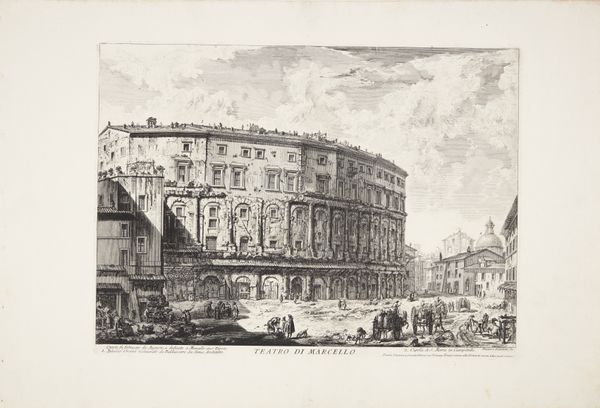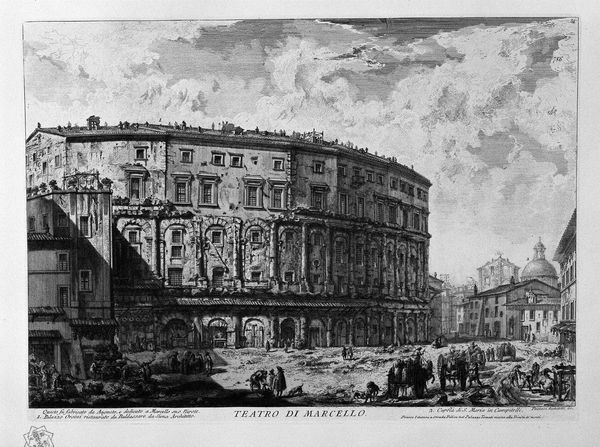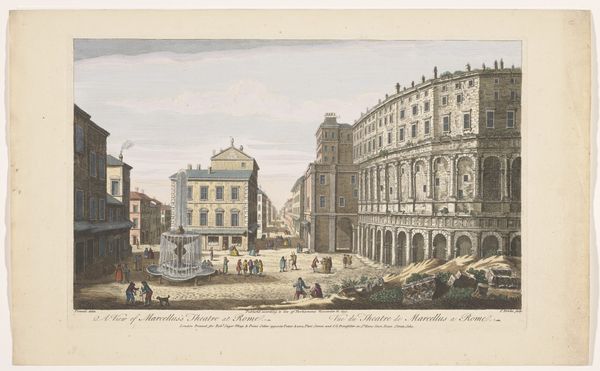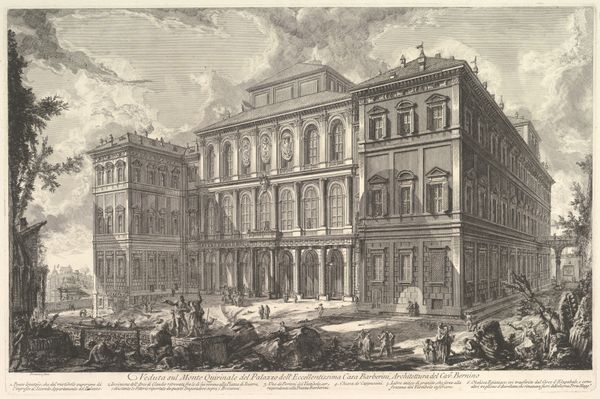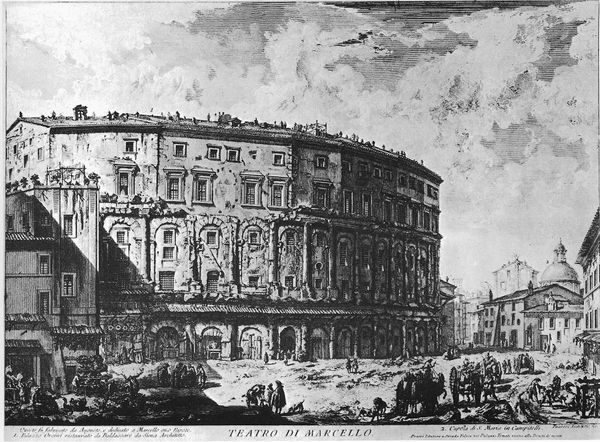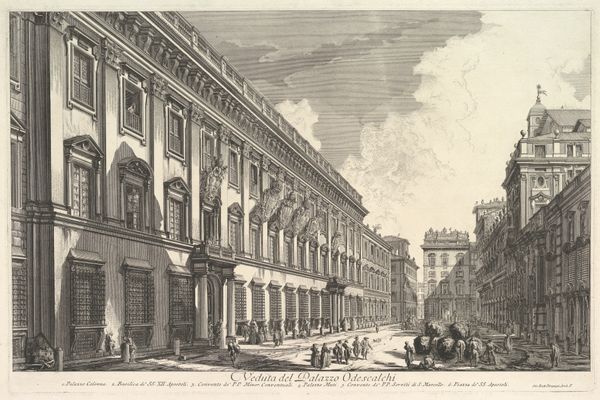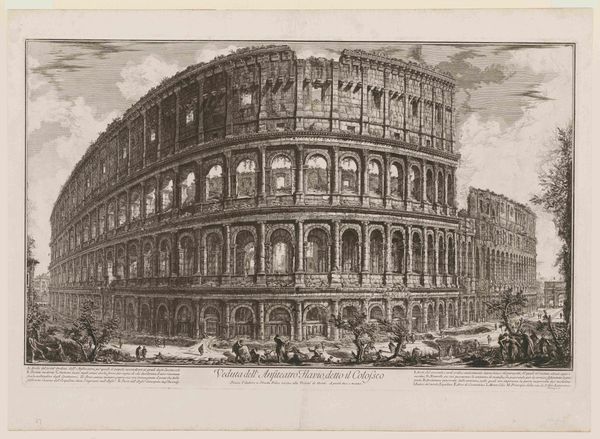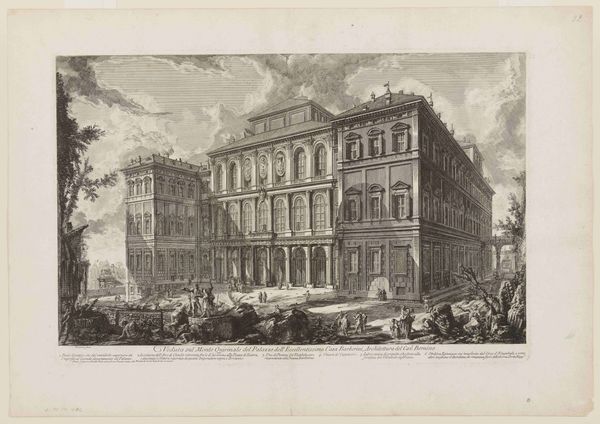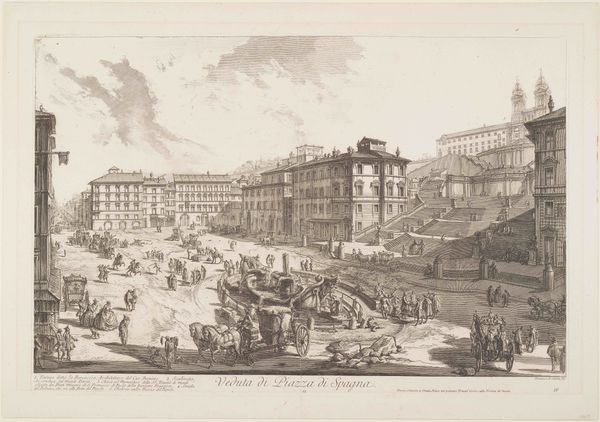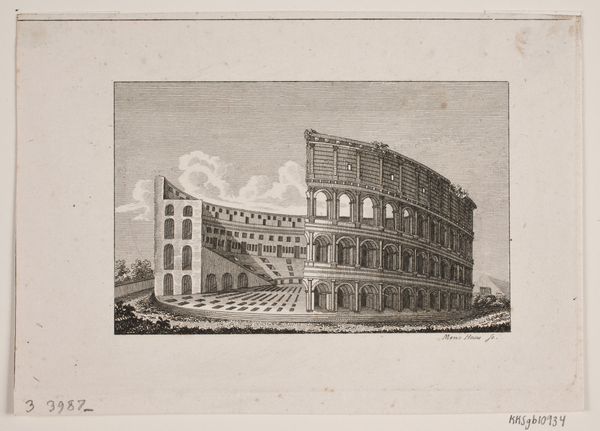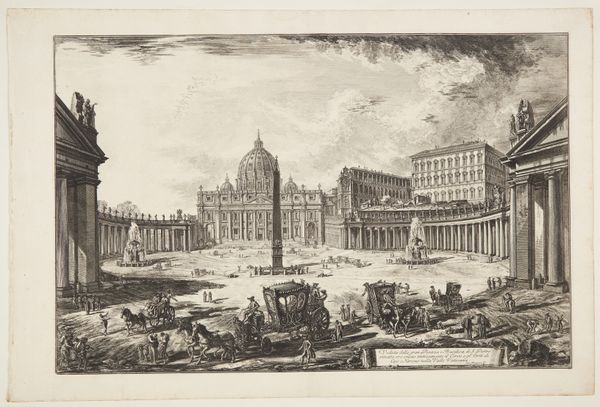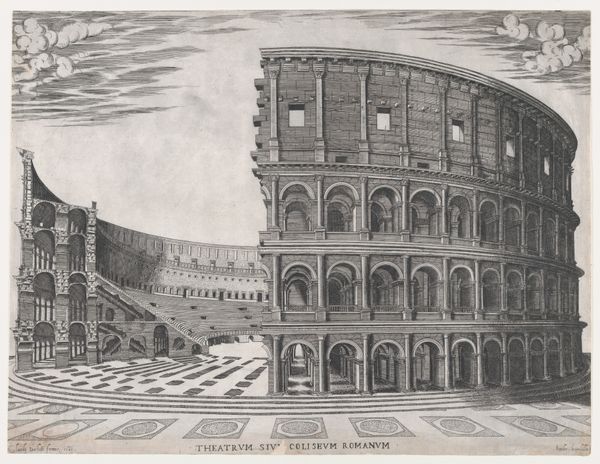
The Theatre of Marcellus (Teatro di Marcello) 1752 - 1762
0:00
0:00
drawing, print, etching, engraving, architecture
#
drawing
#
neoclacissism
# print
#
etching
#
landscape
#
history-painting
#
italian-renaissance
#
engraving
#
architecture
Copyright: Public Domain
Editor: This etching, "The Theatre of Marcellus," was created by Giovanni Battista Piranesi between 1752 and 1762. The level of detail is amazing, but I'm also struck by how the grand architecture feels integrated into the daily life around it. What can you tell me about how this image engages with history? Curator: Piranesi's images weren’t just about accurately documenting ancient Rome. They were about creating a particular *feeling* for the past, weren't they? It's fascinating to consider how this piece plays into the Grand Tour tradition, where wealthy Europeans visited Italy to absorb classical culture. What do you think these prints offered visitors and those back home? Editor: I guess for people who couldn’t visit Rome, this image could bring the spectacle of Roman history to them. And for visitors, it memorialized what they saw, but maybe with a Piranesi spin? Curator: Exactly. Think about the rise of Neoclassicism. Piranesi is operating within this framework, where classical forms were being revived as a statement of political and social order. How might a work like this reinforce existing power structures or, perhaps, subtly question them? Look closely at the tiny figures. Are they dwarfed by the monument, or do they animate it with their everyday activities? Editor: The figures *are* small. The scale seems intended to impress, showing the vastness of Roman achievement against which everyday life unfolds. Perhaps the power lies in that continuous present, that even ruins can still participate in life. Curator: I agree. This isn't just a document of ruins, it’s a commentary on their ongoing presence. Piranesi’s architectural prints were a form of public art, shaping popular imagination about Roman history and Italy's place in the world. Editor: This has really given me a new perspective on how art intersects with history and the creation of cultural narratives! Curator: Indeed. Considering the political and social contexts behind even seemingly straightforward depictions like this enriches our understanding immensely.
Comments
No comments
Be the first to comment and join the conversation on the ultimate creative platform.
